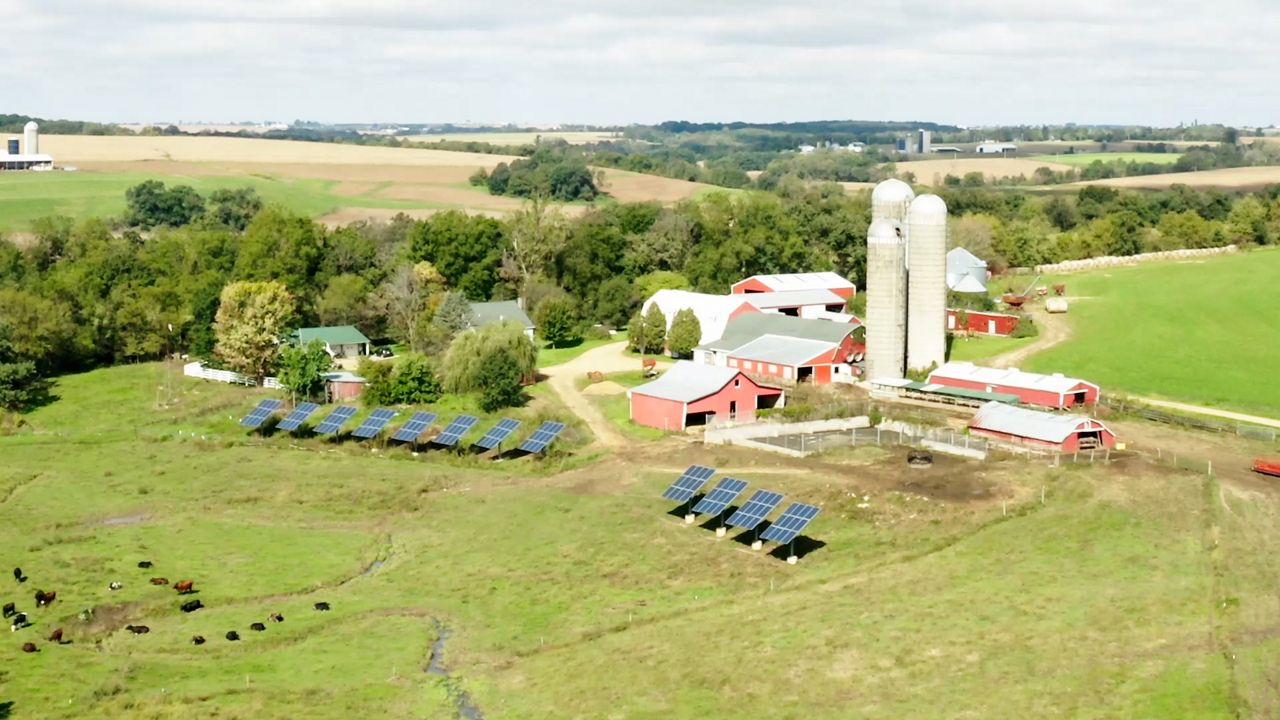MADISON, Wis.— Organic Valley is launching a pilot program to use satellite images to improve grazing for its dairy farms.
“It's all about increasing the effectiveness of their decision making,” said Wade Miller, senior director of farm resources.
All of Organic Valley's dairies use rotational grazing as a feeding means for their cows. It's a system reliant on moving cows from one paddock to the next to graze on plants. It's a method that is a balancing act between growing plants and feeding them to cows.
“You want to move your cows around and harvest those plants at the right time,” Miller said. “Then you want to leave those plants to rest and regrow to the proper maturity before you come back and harvest them again.”
Satellites can help farmers decide when to move cows from one paddock to another. The idea being the images will tell farmers when each paddock is ready for the move, something that's time-consuming chore for farmers of surveying all of the lands on the pasture.
“So it's a very nuanced approach and the thing that this new satellite program will do is it will give our farmers a report on a regular basis so they can time the moving of their cattle,” Miller said.
Miller said studies have shown this can improve utilization of the pasture by 20 percent.
Right now the program is in the pilot stages. 20 farms have volunteered to measure their fields on the same day that a satellite image is taken They then send that data in to teach a computer what stage plants are in based on the satellite image, by using the farmers' data to build out the intelligence.
“To bring the information age to the hands of our farmers to make their work easier and more precise,” Miller said.
Miller expects to be able to open this up to the rest of their farms by the end of 2021. Organic Valley has 1,650 dairies spread across 35 states. Most of their farms are smaller family farms, with the average size of dairy herds being 72 cows.
“Pasture is a big piece of what makes that economically viable, it keeps it at a human scale at margins that will work for the farmer,” Miller said.
Grazing also makes the operations more environmentally viable, with plants in the ground year-round able to sequester carbon from the air and protect soil and water quality.
“Folks are looking at agriculture as a potential piece of the solution for carbon sequestration and the biggest player in that is a living plant covering the soil all year long with a living root in the ground feeding the microbes,” Miller said.
Miller said he thinks satellite technology could be used more widely in the future for grazing.
There is also a push to increase grazing practices in Wisconsin and the midwest through a USDA grant to the University of Wisconsin.



